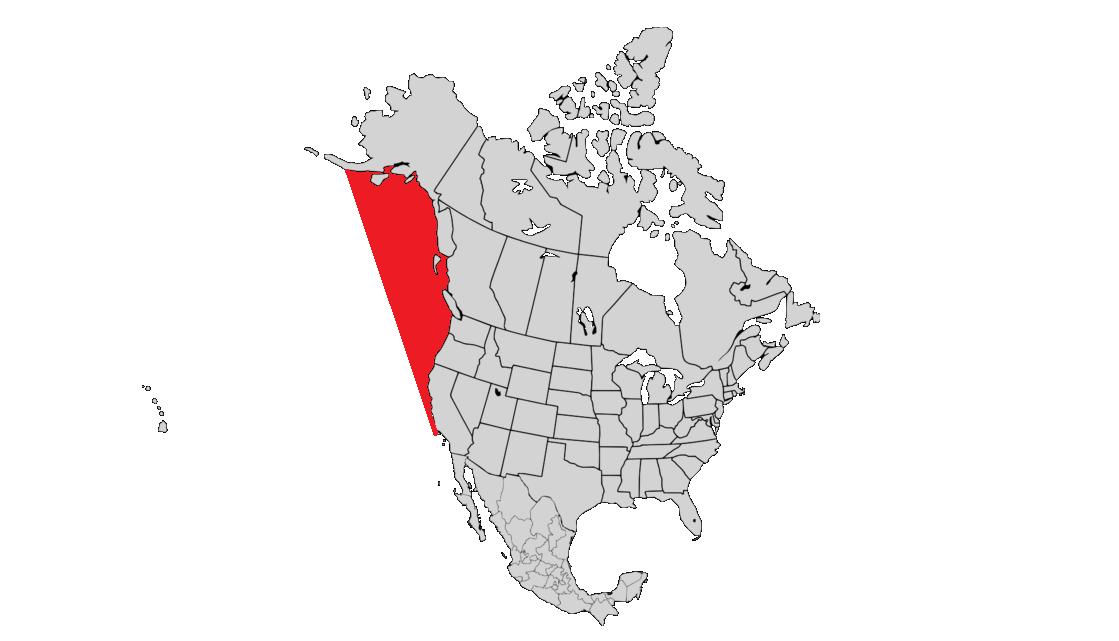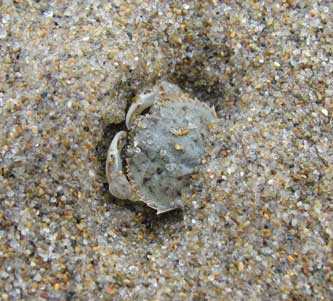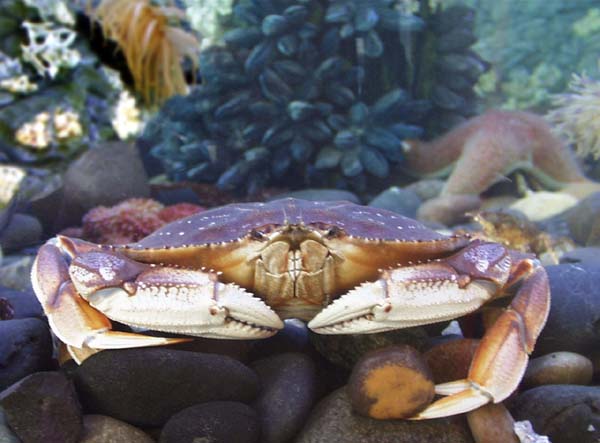Cancer magister, Dungeness crab
Habitat
The explanation of the Dungeness crab
habitat will be broken into two sections.
First, explaining the geographic location of the crab.
Next, more specifically explaining its habitat within the
marine environment.
The Cancer magister occurs along the
west coast of
In the image above the areas in red show the geographic location of the crab.
The Cancer magister tends to reside in three main habitat types in intertidal zones: shells, eelgrass, and muddy areas.
Shells
Many Dungeness crabs find the shells of bi-valves and reside in them. They act as a shelter for many younger crabs because the Dungeness crab is cannibalistic. Younger crabs must find refuge in shells to prevent from becoming prey to older, bigger, and stronger crabs. This is the preferred habitat over the others because it provides the most protection from predation.
Eelgrass
The eelgrass provides a safe habitat along with a wide variety of prey organisms for the Cancer magister to consume, making it a quite popular habitat.
Sandy/Muddy Substrates
While some smaller crabs will hide in the
mud, this habitat it mostly utilized by larger crabs which do
not need as much cover to find preferred food items or other
smaller crabs. The image below shows a juvenile crab
trying to burrow in a sandy bottom.
In Conclusion...
The crabs slowly progresses through all different habitats as it grows older. It first starts as a free swimming larva, then as a juvenile it will reside in a shelled habitat moving into ell beds as it grows larger, finally inhabiting the muddy substrates not having to fear as much predation.
Next, lets explore the Nutrition of the Dungeness crab.
